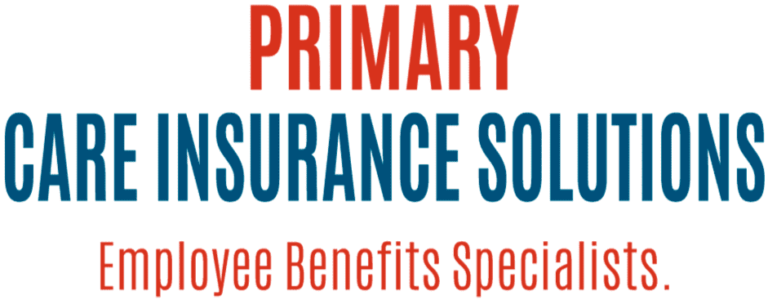The labor market has increased in competitiveness recently. This leaves employers scrambling to come up with ideas to entice top tier talent to their business. For most employers, it is far more affordable to retain the employees they have now over hiring new employees.
In the past, one way that employers have done this is through benefits. The question is, do employee benefits continue to have the same effect on retaining and enticing talent?
At Primary Care Insurance Solutions, we work as employee benefits brokers and have helped hundreds of local Houston businesses retain top talent through benefits packages. And we can say, unequivocally, benefits are still important.
Health insurance premiums are one of the most important coverage benefits employees look for. With the costs of healthcare skyrocketing, employees look at health benefits as a way to reduce costs. Let’s look a bit closer at employee benefits like health insurance and insurance coverage to see how they help retain employees.
How Employee Benefits Effect Retention
According to one survey, over 70% of employees indicate that the quality of your health benefits is important. Unfortunately, only 41% of employers offer health insurance as a part of their benefits packages. Health benefits are by far the most important perk offered by employers. Employees want to know they have a safety net when working for you.
However, the type of health insurance benefits you offer still affects the quality of employees you can retain. After all, if you offer the bare minimum and your employer offers the whole package, chances are employees will gravitate towards them. But what other employee benefits are there that can contribute to employee retention?
What Classify as Employee Benefits?
As employee benefits specialists, we are often asked, what are employee benefits? Sometimes called perks or fringe benefits, employee benefits are anything you offer employees that are beyond their expected salary. Some other examples of employee benefits include paid overtime, medical insurance, profit sharing, retirement benefits, paid vacation, and more.
There is no hard and fast rule to what type of benefits you can offer, but as a general rule for them to be considered competitive, you must offer employees some sort of health insurance. Many employees are also looking for dental and vision coverage, so keep that in mind as well. However, what type of employee benefits you offer should be based on who your workforce is. Each generation has different standards…
Employee Benefits Are Generational
As it turns out, different age groups have different workplace standards. The current workforce is made up of Generation Z (born around 1995), Millennials (born 1981-1990s), Baby Boomers (born 1946-1964), and Traditionalists (born 1925-1945).
Your HR professionals should understand how each of these generations approaches work and what expectations they have for your company. Each generation has its own values, needs, and desires. Look at what they consider non-negotiable and what they are more flexible with for employee benefits. For example, Baby Boomers are likely more concerned with retirement and health insurance than Generation Z. Generation Z is more likely interested in paid time off. Research and understand your employee demographics to make the best decision for your benefits.
Understanding these generations gives your business a better return on investment. Customizing your employee benefits packages strengthens your business and engages employees with what you offer. This reduces waste as well.
Most Common Employee Benefits
The question is, what is your competition offering your employee market? To retain employees, you must first understand what their options are. After all, if you don’t know what the competition is offering you won’t be able to entice top tier talent.
A good foundation is to understand what the most popular benefits are. What are considered employee benefits to your employees? These benefits include:
Health Insurance—Health insurance includes medical coverage, dental and vision coverage as well. However, there are multiple ways to structure health insurance packages.
Vacation—Paid Vacation is one of the most sought-after employee benefits. In fact, some 38% of employees look at paid time off as a must for a new job.
Sick Leave—Another incentive employees are after is sick leave. This falls under the 38% interested in paid vacation or time off. Being able to rest and recover without losing wages is of high interest, particularly to younger generations.
Retirement—Financial planning and company retirement contributions are also enticing to top-tier talent. In fact, right after paid time off, 37% say retirement contributions and/or 401K are the most important employee benefit.
Wellbeing programs—Providing your employees and their families with wellbeing support programs is another great way to engage with top-tier talent. It also makes employees feel cared for, which encourages loyalty.
Profit Sharing—Another benefit is profit sharing. Having a stake in the company you’re working is enticing and encourages employees to build a better business.
Gym Reimbursement—Because employers are paying for health insurance, it makes sense to offer gym reimbursement. Exercise is a key component in reducing obesity and obesity-related illnesses. Getting paid to work out is a key perk for employees.
Student Loan Contribution—This is particularly important for Millennials and younger generations. Education is expensive, and employees willing to cover or contribute to reducing costs are sure to have a curious eye turned towards them.
There are many other employee benefits employers are adding to the roster including salary increases, bonuses, flexible working hours, remote working options, disability insurance, and more. By understanding your employees you can create a health employee benefits package that gets them to want to join your team.
Added Employee Benefits to Consider
Perhaps the most important employee benefits to consider beyond health insurance, are:
-Paid Time Off
-Paid Parental Time Off
-Well Being Employee Benefits Plans
These continue to rank as the most important benefits for the current workforce. The importance of employee benefits and services should not be understated. The quality of your production is only as good as the quality of your workforce. These benefits can help you build a stronger employee team.
How to Create a Tantalizing Employee Benefits Plan
Developing a tantalizing employee benefits plan is not as difficult as you might think. When you work with our team of employee benefits specialists. We know the importance of health insurance, vision, paid time off and all the other perks employees are looking for.
If you are located in Houston, Texas, and need support for your employee benefits packages, we are happy to help. We will interview your employees to see precisely what they’re looking for. Contact us today to learn more about our services.
Frequently Asked Questions
In today’s competitive labor market, how can employers attract and retain top talent?
The competitive labor market has led employers to find ways to entice top-tier talent. Retaining existing employees often proves more cost-effective than hiring new ones. Offering appealing employee benefits is a proven method to achieve this goal.
Are employee benefits still effective in retaining and attracting talent?
Absolutely, employee benefits remain a powerful tool for retaining and attracting talent. Quality benefits packages, including health insurance, play a pivotal role in reassuring employees and reducing their healthcare costs.
What are employee benefits and how do they impact retention?
Employee benefits, also known as perks or fringe benefits, encompass offerings beyond salary. These can include health insurance, paid overtime, retirement plans, and more. Health benefits are especially influential in boosting retention rates, as they provide employees with a sense of security.
How does the effect of employee benefits vary across different generations?
Different generations, such as Generation Z, Millennials, Baby Boomers, and Traditionalists, have distinct expectations from their workplace. Understanding each generation’s values helps tailor benefits packages to meet their needs. Factors like retirement and health insurance hold varying degrees of importance.
What are some of the most common and sought-after employee benefits?
The most common and sought-after employee benefits include health insurance, paid vacation, sick leave, retirement plans, wellbeing programs, profit sharing, gym reimbursement, student loan contributions, and flexible working hours. These perks cater to different needs and preferences across the workforce.
How can employers create an appealing employee benefits plan?
Developing an attractive employee benefits plan can be straightforward with the right support. By collaborating with employee benefits specialists, you can tailor packages to your employees’ needs. In Houston, Texas, Primary Care Insurance Solutions offers expert assistance, including interviews with employees to align benefits with their expectations. Contact us to learn more about our services and enhance your benefits offerings.






